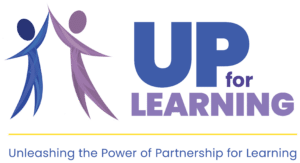Mid-way through our conversation about youth and adult stereotypes during the Youth and Adults Transforming Schools Together (YATST) program orientation, I pictured a comic strip showing a group of young people walking past a group of adults on the sidewalk. The bubbles over their heads showing their thoughts were exactly the same … I think they see me as out of touch, unaware of the circumstances they are navigating and unable to engage with them in any meaningful way. Our discussion about that moment revealed just how intimidating that can feel and how easily it can get in the way of working together as partners.
We take up this exercise on youth and adult stereotypes on the second morning of the orientation for our YATST. We come together for two days of training in our action research process and use the evening for adventure-based team building activities that take us out into the natural world. We wait until the second day to do this activity because it requires a sense of connection and safety among the participants, and the first day and evening of work together help create that sense of community. It is the only time during the orientation when we ask young people and adults to work apart from one another. It is designed to name the assumptions we make about one another based on age, facilitate a dialogue about where those assumptions come from and how they affect us, and move to a conversation about getting past those assumptions. Our goal is to identify who we are individually, collectively and how to work together as youth-adult partners.
The Youth Adult Stereotypes activity asks each group – youth and adult – to name the stereotypes that they think the other groups hold about them. So, young people are asked what stereotypes they think adults hold about them and adults are asked what stereotypes they think youth hold of them. By asking them to take on the other group perspective, the activity is intended to give participants permission to name assumptions that can be difficult to acknowledge. The second step, when each group shares their list of stereotypes, is a delicate moment in the progression of the activity – especially when participants share their experiences. At the same time, the truth of our experiences – and the willingness to share that truth – opens the door to the conversation about how to move forward together.
As we worked through the list of stereotypes and shared our experiences, there were stories that were hard to hear. Stories about disrespect, devaluing and dehumanizing each other. There were stories about the challenges we face alone and together – none more powerful than climate change. And there were stories about fears which limit us individually and keep us apart.
As we continued, we heard hopes for one another, aspirations for ourselves and an abiding belief in our capacity to change.
In the end, I was struck by several reflections from young people which named thoughts and feelings that I have as an adult. It prompted me to share my experience, consider the parallels that exist in our experience over time and call myself again to the work of partnership across time whether it be in terms of age, or in the truth of any one moment.
 Contact: Harry Frank
Contact: Harry Frank
Phone: 802-989-4913
Email:[email protected]

